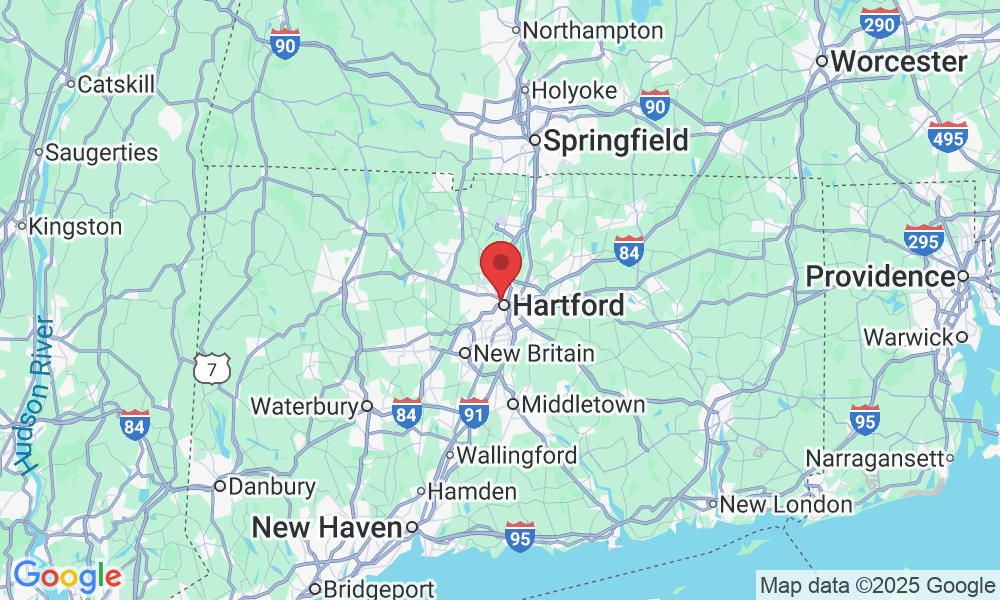Connecticut's Experts in Asbestos Floor Tile & Vinyl Sheet Removal
Connecticut'ss Experts in Asbestos Floor Tile & Vinyl Sheet Removal
Renovating a kitchen, basement, or commercial space often involves lifting old flooring. In Connecticut properties built before 1980, those antique floors can hide a serious danger: asbestos. Whether in the tiles themselves, the sheet vinyl, or, most commonly, the black adhesive underneath, our team at Alberca Construction is here to ensure your renovation project begins with the most fundamental step: safety.
Common Asbestos-Containing Flooring Materials We Remediate
Our certified team has extensive experience in identifying and safely removing all types of asbestos-containing flooring materials, including:
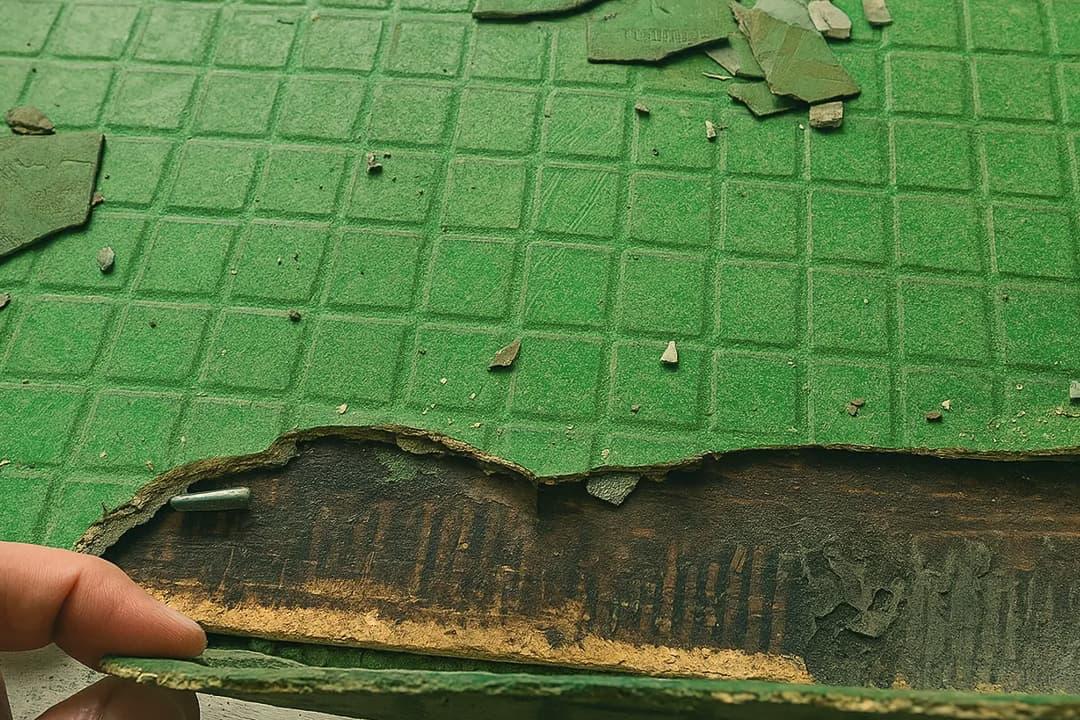
1. Vinyl Asbestos Tile (VAT)
Commonly known as VAT, these tiles were a preferred option from the 1950s to the 1980s. Typically square (most common sizes are 9x9 and 12x12 inches), they contain asbestos blended directly into the vinyl for added durability. They can be difficult to distinguish from modern tiles without professional testing.
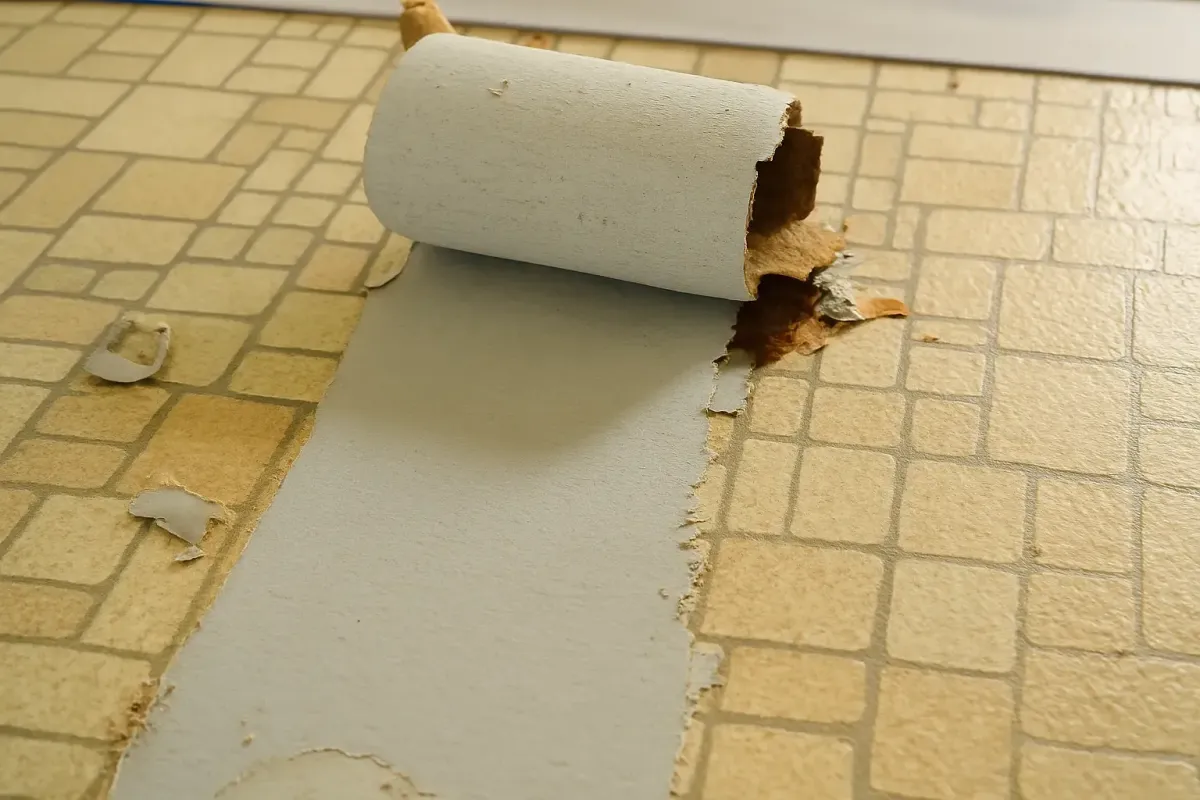
2. Antique Linoleum & Sheet Flooring
Unlike tiles, older linoleum or vinyl sheet flooring was installed in large rolls. The danger here typically resides in the paper or felt backing, which was often reinforced with asbestos. When lifting this type of flooring, the backing can easily tear and release a high volume of dangerous fibers into the air.
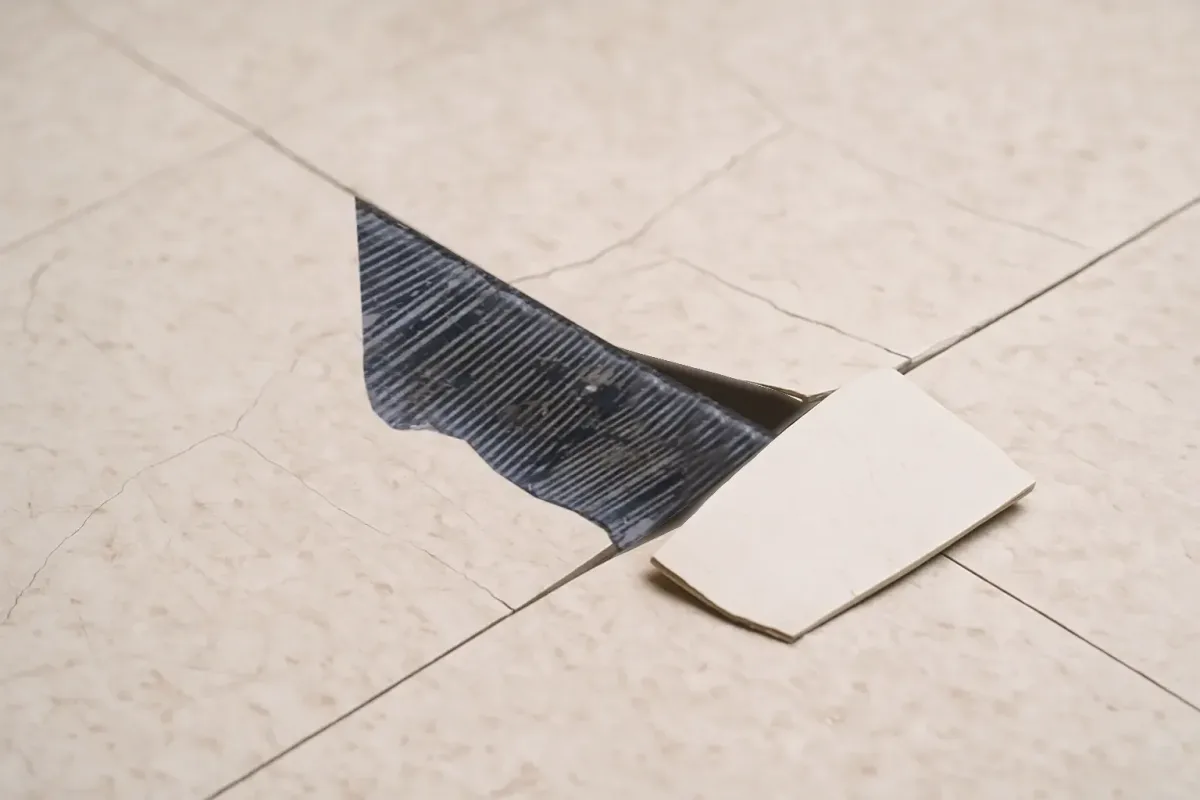
3. Accredited Laboratory Analysis
This is a hidden and frequently overlooked hazard. The thick, black or brown, tar-like adhesive used to bond tiles or linoleum often contains asbestos. Critically, even if a previous owner removed the tiles, this contaminated mastic layer often remains on the concrete or wood subfloor, posing a risk for any new renovation.
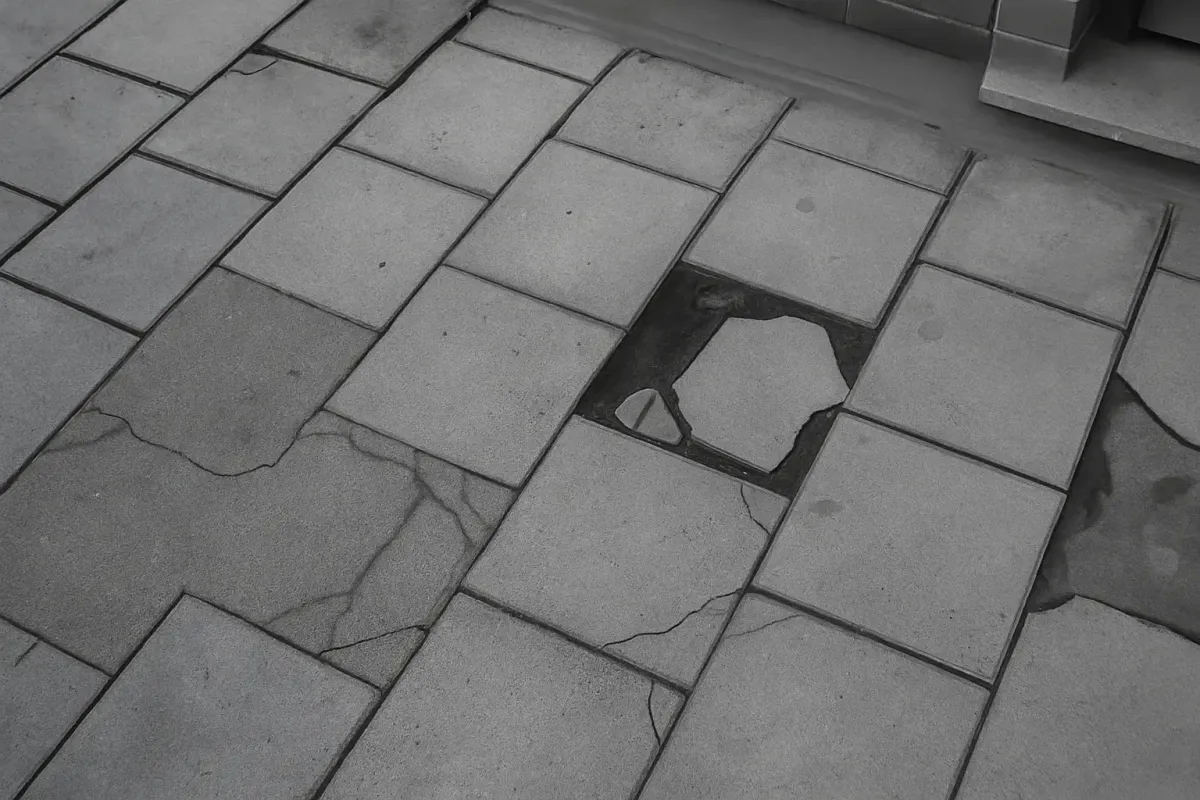
4. Cementitious Asbestos Tiles
Though less common in residential settings, these heavy, durable cement tiles were sometimes used in commercial or utility areas. Asbestos was added to the cement mixture to enhance its strength and fire resistance. Our team is equipped to identify and safely handle these denser materials.
1. Vinyl Asbestos Tile (VAT)

Commonly known as VAT, these tiles were a preferred option from the 1950s to the 1980s. Typically square (most common sizes are 9x9 and 12x12 inches), they contain asbestos blended directly into the vinyl for added durability. They can be difficult to distinguish from modern tiles without professional testing.
2. Antique Linoleum & Sheet Flooring

Unlike tiles, older linoleum or vinyl sheet flooring was installed in large rolls. The danger here typically resides in the paper or felt backing, which was often reinforced with asbestos. When lifting this type of flooring, the backing can easily tear and release a high volume of dangerous fibers into the air.
3. Accredited Laboratory Analysis

This is a hidden and frequently overlooked hazard. The thick, black or brown, tar-like adhesive used to bond tiles or linoleum often contains asbestos. Critically, even if a previous owner removed the tiles, this contaminated mastic layer often remains on the concrete or wood subfloor, posing a risk for any new renovation.
4. Cementitious Asbestos Tiles

Though less common in residential settings, these heavy, durable cement tiles were sometimes used in commercial or utility areas. Asbestos was added to the cement mixture to enhance its strength and fire resistance. Our team is equipped to identify and safely handle these denser materials.
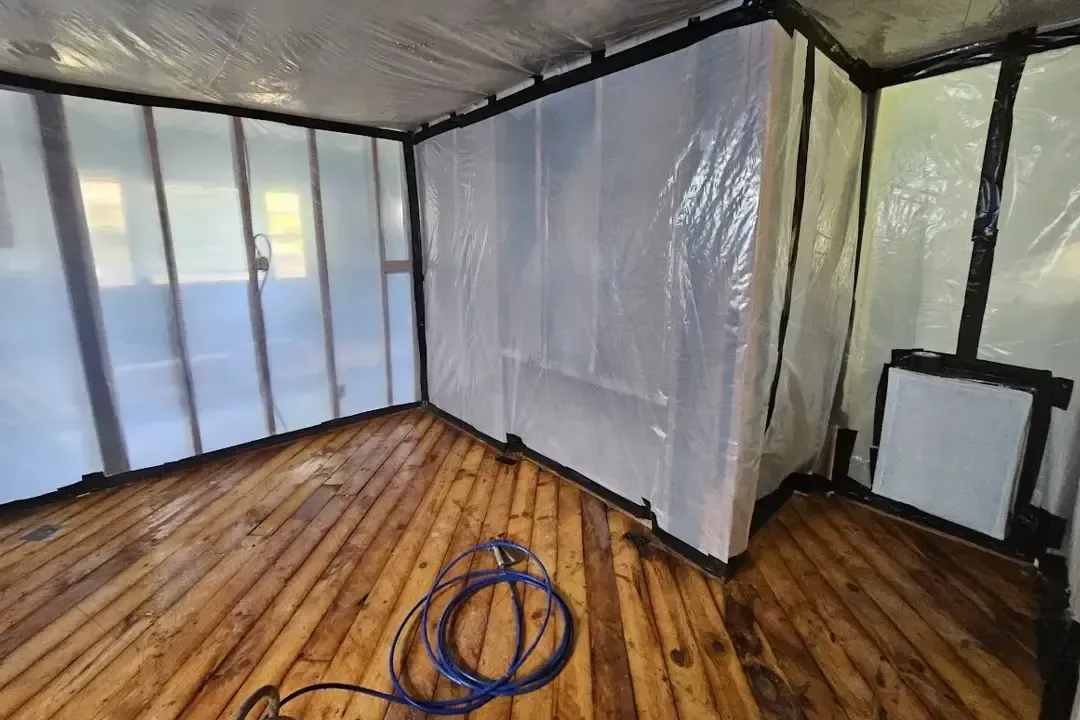
Our Specialized Floor Removal Process
We understand that each type of flooring requires a specific approach. Our process is adapted to ensure maximum safety:
1. Inspection & Third-Party Testing
We coordinate with an independent firm to take samples and analyze your flooring and adhesive, providing you with objective and precise confirmation.
2. Total Area Containment
We seal the workspace with barriers and negative air pressure systems to ensure no fibers contaminate the rest of your property.
3. Safe Flooring & Mastic Removal
We use specific techniques for each material, whether carefully lifting intact VAT tiles, rolling up sheet vinyl, or removing residual mastic with wet scraping methods or HEPA-filtered grinding.
4. Final Cleanup & Verification
We thoroughly decontaminate the subfloor and surrounding area, leaving your space clean, safe, and ready for the next phase of your project.
1. Inspection & Third-Party Testing
We coordinate with an independent firm to take samples and analyze your flooring and adhesive, providing you with objective and precise confirmation.
2. Total Area Containment
We seal the workspace with barriers and negative air pressure systems to ensure no fibers contaminate the rest of your property.
3. Safe Flooring & Mastic Removal
We use specific techniques for each material, whether carefully lifting intact VAT tiles, rolling up sheet vinyl, or removing residual mastic with wet scraping methods or HEPA-filtered grinding.
4. Final Cleanup & Verification
We thoroughly decontaminate the subfloor and surrounding area, leaving your space clean, safe, and ready for the next phase of your project.
Planning a Flooring Renovation? Don't Take Chances
Before you lift that old flooring, ensure you know what's underneath. Contact us for a professional assessment and a free, no-obligation estimate.
Frequently Asked Question
What exactly is asbestos and why is it dangerous?
Asbestos is a naturally occurring mineral composed of microscopic fibers. Due to its heat resistance and durability, it was heavily used in building materials until the 1980s. It is dangerous because, if disturbed, it releases these fibers into the air. When inhaled, they can become lodged in the lungs and, over time, cause serious illnesses like asbestosis and cancer.
How do I know if I have asbestos in my home?
It's impossible to know just by looking. Generally, if your home was built before 1985, there is a chance it contains asbestos in materials like attic insulation (vermiculite), floor tiles, popcorn ceilings, exterior siding, or pipe wrap. The only way to be 100% certain is through laboratory testing.
Should I take a sample myself to get it tested?
No, never. Taking a sample yourself without the proper equipment and protocols can be very dangerous, as it can release a high concentration of fibers in a small area. You should always contact a certified professional for inspection and sampling. We coordinate this service with independent firms to ensure your safety. (You can read more on our [Asbestos Inspection & Testing] page).
Is it safe to stay in my home during the asbestos removal process?
It depends on the scope and location of the project. For small, well-contained jobs, it may be possible to remain in the house. For larger projects, especially those in high-traffic areas or involving the HVAC system, we recommend arranging to be off the property. Your family's safety is our #1 priority, and we will always give you a clear and honest recommendation for your specific situation.
How long does an asbestos removal project take?
The duration varies depending on the size and complexity of the job. A small project in a basement might take 1-2 days. A full attic abatement could take 3-5 days or more. Your detailed estimate will include a projected timeline.
What happens to the asbestos after you remove it?
Asbestos is a regulated hazardous waste. All material is placed in sealed and labeled bags or containers according to EPA and CT DEEP regulations. It is then transported by licensed haulers to a specific landfill that is licensed to receive asbestos waste. We provide you with all disposal documentation for your records.
How much does asbestos removal cost?
The cost varies and depends on several factors: the amount of material to be removed, its location and accessibility, and the type of material (loose vermiculite is different from floor tiles). This is why we cannot give a price without seeing the site. What we do guarantee is a detailed, transparent estimate with no hidden costs.
Is the estimate free?
Yes, absolutely. Our initial site visit to assess the project and provide you with a detailed estimate is completely free and without obligation.
Are there any financial aid or rebate programs available?
Yes! The most notable case is the ZAI Trust, which can reimburse homeowners for a significant portion of the cost of vermiculite insulation removal. We are very familiar with this process and can guide you through it. (You can read more on our Rebates & Cost-Saving Programs page).
Are you licensed and insured in Connecticut?
Yes. Alberca Construction Company LLC holds all required licenses from the state of Connecticut for asbestos and hazardous material abatement. We also carry full general liability insurance and a specific pollution liability insurance policy for your complete protection and peace of mind. (You can see more on our Certifications page).
What areas of Connecticut do you serve?
We serve the entire state of Connecticut from our base in Hartford.
How far in advance do I need to schedule my project?
We try to be as flexible as possible. Generally, once an estimate is approved, we can schedule work to begin within 1-2 weeks, depending on our current workload. For emergency situations, we will do everything we can to assist you sooner.
Get In Touch
Email: [email protected]
Phone: (860) 206-7176
Address : 180 Walnut St, Hartford Connecticut 06120
Assistance Hours :
Mon – Sat 7:00am - 5:30pm
Sunday – CLOSED


